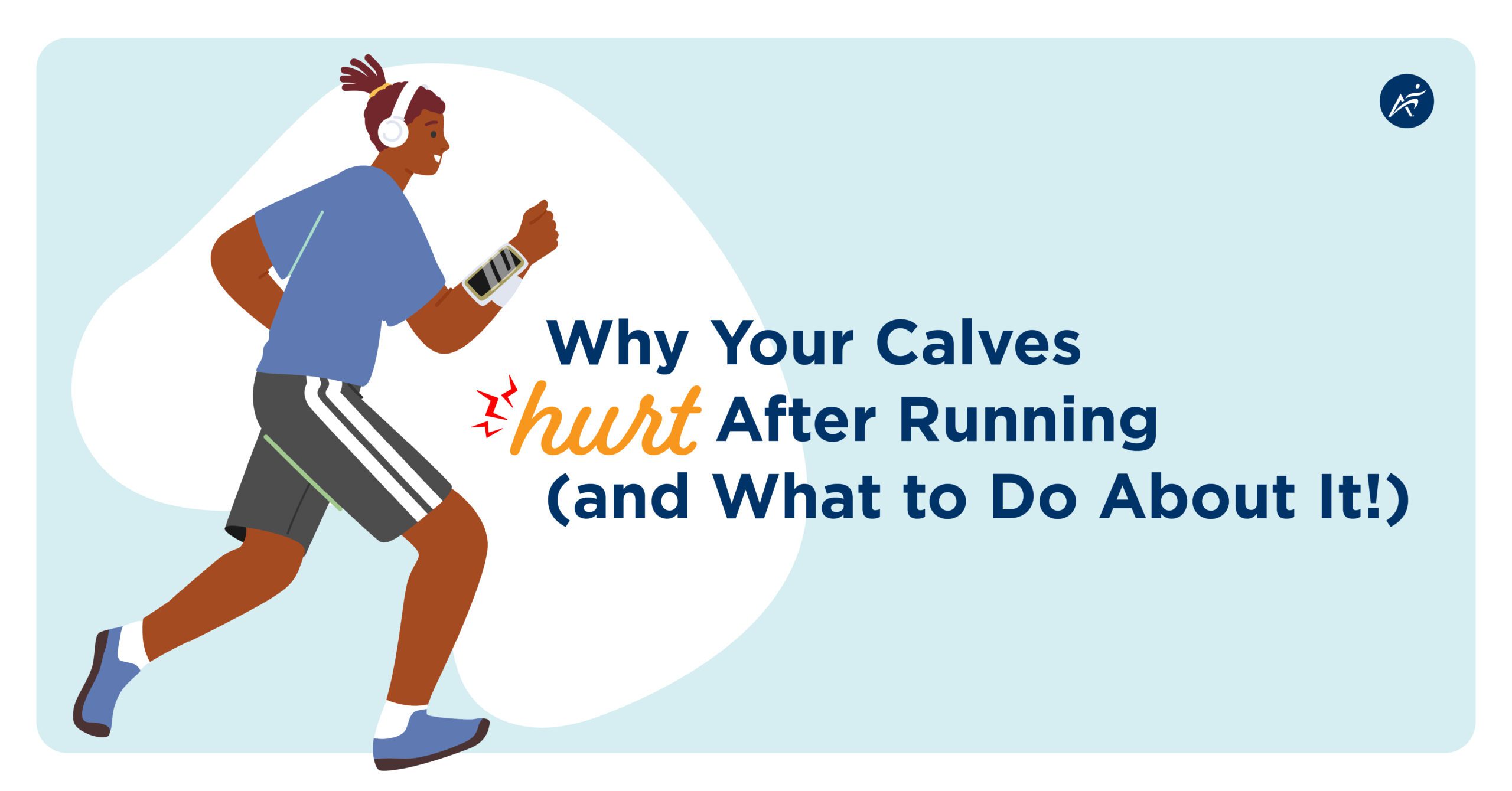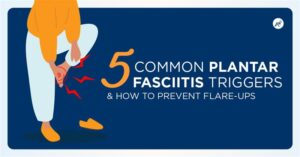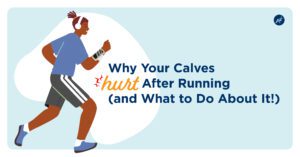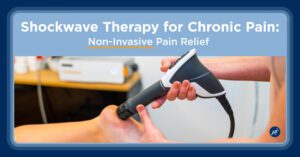An active lifestyle keeps our bodies and minds in good shape. Running is a great way to add activity to daily life because it is an accessible and self-paced activity. It not only strengthens muscles, burns calories, and improves cardiovascular health, but running also reduces stress, improves memory, and enhances moods.
While this activity helps us achieve physical and mental wellness, it can put excess strain on the calf muscles, causing mild to severe pain after running. The good news is you can leave that calf pain in the dust by discovering a routine that’s right for you. Every runner is different, but here are important factors to consider to properly manage calf pain after running.
What Type of Runner Are You?
The different styles of running can affect the kind of calf pain you experience based on how you engage your muscles.
Running Styles
A long-distance run consists of a steady pace for at least 1.9 miles. This type of run improves lung health, bone density, and blood flow to the body, but can require a lot of endurance. These repetitive motions spanning long distances can put stress on joints and muscles and can commonly lead to calf tightness after a run.
Overuse of this muscle is a common injury that can cause painful calf tightness during a run. Achilles tendonitis is another common ailment for long-distance runners as the repetition of the tendon lifting the heel off the ground causes inflammation.
A short-distance run or sprint is a very fast run of 400 meters or less. This style mirrors the benefits of long-distance running, but uses explosive force to quickly accelerate speed. Sudden movements, increased intensity, or quick pivots can overload and overstretch the calf muscle, causing muscle tears and strains with mild to severe calf pain during a run.
Running Surfaces
Soft surfaces like grass reduce stress on the joints and calf muscles by absorbing more impact. However, the uneven surface requires more effort for stability and movement, which can cause sore calves after running.
Running on a harder surface like asphalt offers a more stable platform for muscles and joints. But these surfaces can intensify impact and increase potential injury to the calf muscles.
Running Techniques
Running styles often determine running techniques; however, are you using the correct techniques to minimize calf pain?
A forefoot striker uses the ball of the foot and toes to make contact with the ground first. Sprinters typically use this method to maximize speed and minimize ground contact. While the technique allows for better shock absorption and less impact on joints, it can cause Achilles tendon injuries and painful calf strains.
A midfoot striker touches the ground with the heel and forefoot at the same time. Considered the most neutral, this technique is ideal for long-distances as it prevents over-striding, but also reduces stress to joints and calf muscles for all runners by distributing force more evenly throughout the foot.
A heel striker makes ground contact with the heel first before rolling into a flat foot, minimizing the stress on the calf muscle. The majority of recreational runners use this technique, but many land on the heel too aggressively. This force increases impact to the ankles, knees, and hips.
What can every runner do to minimize injuries and avoid calf pain after a run?
Choose the Right Shoes to Minimize Calf Pain After a Run
Shoes that best support their needs are important for all runners, reducing the risk of calf injuries. Personal comfort and fit are a must, but here are a few tips and guidelines to consider when choosing the right shoes:
- Forefoot strikers should look for shoes made of lightweight materials to reduce fatigue and with flexible outsoles to ensure a smooth transition from toe-off to landing. Shoes with built-in arch support are ideal for posture and energy transfer. When a runner lands primarily on the ball of the foot, responsive cushioning is important to absorb shock and avoid lower leg injuries during your run.
- Midfoot strikers should look for breathable, lightweight shoes that balance both cushioning and ground feel. While cushioning in the midsole lessens shock, too much could affect the body’s ability to sense its own position and movements, risking balance and stability. A flexible outsole will promote ground feel, allowing for natural foot movement.
- Heel strikers benefit from stability shoes with medial posts or a sturdy heel counter to help the foot maintain alignment during each stride. Shoes with a higher heel-to-toe drop of 8-12mm is ideal to reduce calf strain during a run. Because heel strikers place a high impact of force on the heel, ample cushioning is very important to absorb shock; therefore, they should avoid minimalist shoes, which offer less support and cushioning.
And remember, even the right shoes eventually wear out. No longer able to provide proper fit and support, worn-out shoes put extra pressure on the arches, which leads to calf soreness after running. Be sure to replace footwear at the right time to prevent discomfort or injuries.
This information is for general educational purposes only. Please speak with your healthcare provider before making any adjustments to your running or fitness routines.
How Posture Positions You to Get Ahead of Calf Pain
Incorrect running posture can cause many chronic injuries including pain in your calves. Muscle imbalances can increase tension in the calf after a run when the body is not properly aligned. Here are a few posture tips to keep every runner in the lead:
- Keep your body aligned. Have a straight spine with your head above your shoulders, your shoulders above your hips, and your hips above your knees and ankles. Don’t lean too far forward or back.
- Keep your head in a neutral position and look directly forward, approximately 10-20 feet in front of you.
- Keep your shoulders back, leveled, and relaxed.
- Keep your elbows at a 90-degree angle and close to your sides with a natural swing.
- Run ‘tall’ by lifting and engaging your core.
- Swing your arms from front to back.
- Lean your whole body slightly forward (5-7 degrees), beginning from your ankles, not from your waist.
- Land your feet directly under your center of mass.
Tips to Manage Calf Pain After Running
Calf pain after running is quite common because of a combination of factors. You can do your best to minimize risk, but there is no guarantee your runs will end pain free. Runners experiencing severe, sudden calf pain or swelling should see a healthcare provider. For milder pain potentially caused by overuse, muscle cramps, or strains, here are steps you can take to manage general calf pain after running:
- COOL DOWN by slowly jogging or walking for 5-15 minutes while your muscles are warm to calm your breathing and heart rate. This helps supply oxygen to your muscles and flush out metabolic waste such as lactic acid that can cause pain after your run.
- REHYDRATE by drinking 16-24 ounces of fluid to help muscles recover.
- Do STATIC STRETCHES and FOAM ROLL after your run by applying a sustained stretch to a specific muscle group. Some examples are the standing calf stretch, toe dips, or downward facing dog pose, holding each stretch for a minimum of 30 seconds each.
- Apply ICE to reduce inflammation for 10-20 minutes several times a day; however, do not use ice before running.
- Use COMPRESSION sleeves to reduce soreness and improve blood flow.
- ELEVATE your leg above the heart level to increase circulation and reduce swelling.
- REST your calf muscle, avoiding strenuous activities for a couple of days. Only engage the calf when necessary.
A Proper Warm-Up Can Help Prevent Calf Tightness
Part of managing calf pain after your run is to prepare calf muscles before you get to the starting blocks with a proper warm-up.
- Start by walking or jogging at a moderate pace for five minutes to increase blood flow.
- Next, focus on dynamic stretches like the figure 4 stretch, thigh warm ups, and calf stretches.
- As a general rule of thumb, it’s best to drink 16-20 ounces of fluids 1-2 hours prior to running.
Questions? Reach Out to Learn More About how Airrosti can help you
If you have additional questions or would like to learn more about our appointments, call us at (800) 404-6050 for more information.









